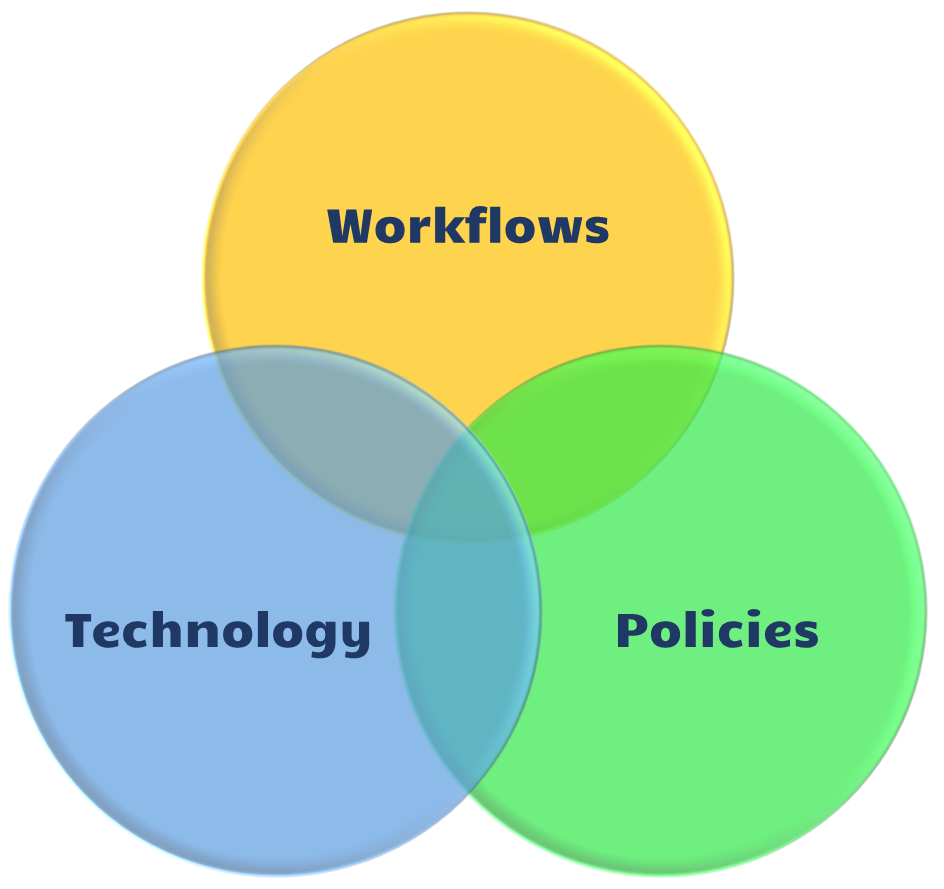Every extraordinary recipe for a sublime dish relies on superb ingredients and high-grade kitchen tools that the seasoned chefs carefully procure and maintain. The secret behind sublime telehealth, lies in a similar list of ingredients and tools, namely workflows, policies, and technology.
While technology is obviously a key ingredient in a clinical service powered by digital health solutions, it is actually the least important. Granted, a good knife, a great food processor, or a solid frying pan will make it easier to create great tasting food. But it can’t compensate for poor ingredients or lack of skill. So pick your technologies wisely, but don’t make technology the be all and end all.
Policies in telehealth are akin to those necessary rules in cooking you have to follow for superb taste: preheat your oven; let the steak reach room temperature; cut everything into the same size, don’t smooch the ingredients, etc. It’s important you follow the right rules but leave some room for creativity too.
Which leaves workflows as the key ingredient to a sublime telehealth experience. A telehealth service is only as good as its systems. Don Berwick, MD, founder of the Institute for Healthcare Improvement, often said that “Every system is perfectly designed to get the results it gets”. It’s the workflows that make up the system and as such are the secret to success or the root cause of failure.
A Shopping List



As with all recipes, the first question is: what type of dish do you want to create (breakfast, dinner, or dessert?) and who is this for (your spouse, your kids or your mother in law?). Each telehealth service requires a different set of workflows, a different set of policies and oftentimes a different set of technologies.
Let me, for the purpose of this article, focus on the most common use case of today’s Covid-19 world: scheduled or ad-hoc direct-to-consumer, live audio/video visits.
Workflows
As I mentioned above, workflows are the key ingredients to telehealth success. If the quality of the workflows is poor, no policies, no technology can make up for it and the telehealth experience will be poor for physicians and patients.
Here are 8 of the key telehealth workflows that you have to define and optimize for maximum performance:
- TeleScheduling — scheduling an televisit (including ad hoc)
- TeleOnboarding — preparing the patient for their first televisit
- TeleRooming — preparing the patient for the imminent televisit
- TeleVisit — connecting the physician and the patient.
- TeleDischarge — post-visit activities (follow-ups, prescriptions, referrals)
- TeleFollowup — post-visit activities a few weeks out
- TelehealthBilling — proper coding, charging and getting paid
- TelehealthPreapproval — ensuring compliance with the latest policy & reimbursement rules
Policies
Especially given the mass adoption we’ve experienced in the wake of the Covid-19 outbreak, Telehealth is still a new and novel way to deliver care to many. While care delivery is oftentimes uniquely tailored to the preferences of the physician, there are certain protocols (or policies) that each organization must establish to ensure consistent high-quality care and excellent patient outcomes.
Here are 6 of the key telehealth policies that every organization must define and implement:
- Webside Manners — how clinicians can best and most effectively present themselves
- Patient Safety — best practices to ensure (and if necessary restore) the safety of the patients
- Informed Consent — required by many states and, if executed well, in general a good idea
- Physician Licensure — while covid exceptions lifted some reinforcement, proper licensure must still be followed
- Clinical Guidelines — ideally developed by clinicians for clinicians to objectively decide which patients are suitable for which care modality
- Billing, Co-Pay — a policy that will need to remain flexible for the next two years as the rules and regulations will constantly change.
Technology
Last and least, there are a number of technologies that, when integrated with the workflows and supported by the policies, will create a superb experience for the patients and the clinicians.
Here are the key technologies that you need to select and/or configure carefully so they can be in support of your workflow:
- Video Visit Hardware — HD webcam with good autofocus, speaker, microphone, headphones
- Video Visit Environment — lightning, 2 or 3 separate monitors, proper background, etc.
- Video Visit Software — solution to connect clinicians and patients via live audio/video
- Patient-side technology — proper phone, tablet, laptop, computer & sufficient connectivity
- Patient-side environment — lightning, background, background noise
- Scheduling System — patient scheduling/self-scheduling and integration into video
- Electronic Medical Record — documenting clinical notes & storing other PHI
- ePrescribing
Bringing it all together
Just like in cooking, the order of steps in which ingredients are added or steps are undertaken are very important.
Given that healthcare is a highly regulated industry, the development of the key policies is crucial to do first, so as to inform the development of your key workflows.
Your workflows should always be defined before selecting your technology, so that they can drive your insights regarding what you need from the technology.
And remember: Telehealth is not mashed potatoes, but rather a carefully arranged ratatouille.
Guten Appetit!








To receive articles like these in your Inbox every week, you can subscribe to Christian’s Telehealth Tuesday Newsletter.
Christian Milaster and his team optimize Telehealth Services for health systems and physician practices. Christian is the Founder and President of Ingenium Digital Health Advisors where he and his expert consortium partner with healthcare leaders to enable the delivery of extraordinary care.
Contact Christian by phone or text at 657-464-3648, via email, or video chat.







Leave A Comment